The UK is watching with interest after Canada leapfrogged the United States to become the first overseas customer for Australia’s Jindalee Over-the-Horizon Radar (JORN) system – in what is expected to become Australia’s largest ever defence export.
According to an exclusive report by ABC Australia’s defence correspondent Andrew Greene, newly elected Canadian Prime Minister Mark Carney confirmed Ottawa’s $6.5 billion deal to acquire the JORN technology, following a conversation with Australian Prime Minister Anthony Albanese. The announcement was made during a high-profile visit to the Arctic territory of Nunavut, where Carney described the system as vital to detecting and responding to threats in Canada’s northern approaches.
“It will most fundamentally keep all Canadians safe,” Carney said. The Canadian version of the system will support NORAD, the joint US-Canadian aerospace defence initiative, and is designed to monitor both air and maritime threats far beyond the horizon.
The JORN system, developed by Australian scientists and built by BAE Systems Australia, has been in operation for over 30 years. Unlike conventional line-of-sight radar, JORN uses high-frequency radio waves bounced off the ionosphere to monitor targets as far as 3,000 kilometres away. Its over-the-horizon capability has been described as among the most advanced of its kind globally.

While the United States had long been in discussions with Australia about acquiring the same technology, ABC reports that negotiations were stalled by the Pentagon’s ongoing spending review, known as the DOGE audit. Canadian officials saw an opening following Donald Trump’s return to the US presidency and moved quickly to secure the deal ahead of Washington.
According to the ABC, “the Canadians were always going to follow the US purchase and slipstream off that, but circumstances changed and things moved quickly.”
UK officials are also said to be exploring the possibility of acquiring the JORN system. As Greene reports, “the United Kingdom, where the parent company of BAE Systems Australia is based, has also expressed interest in purchasing the JORN technology, but is yet to approve the idea.” No formal deal has yet been announced.
UK defence planners may see JORN as a valuable tool in protecting Northern airspace and providing persistent surveillance over long distances, particularly as the UK deepens defence ties in the Arctic and Indo-Pacific. However, the political and industrial implications of adopting Australian-developed radar over homegrown or allied systems will likely form part of the ongoing consideration.
Australia’s Defence Minister Richard Marles has called the Canadian agreement “potentially the biggest defence industry export that Australia has ever been a part of,” telling ABC’s News Breakfast that the deal could bring enormous benefits to Australian industry.
How does it work?
The Jindalee Operational Radar Network (JORN) is an over-the-horizon radar (OHR) system operated by the Royal Australian Air Force. It is designed to detect and track air and maritime activity across vast distances, with a nominal range of 1,000 to 3,000 kilometres and a potential maximum reach exceeding 4,000 kilometres. The system operates by bouncing high-frequency radio waves off the ionosphere, enabling it to monitor areas far beyond the radar horizon. This capability allows JORN to cover all of Australia’s northern approaches and parts of Southeast Asia, making it central to Australian defence surveillance and early warning strategies. JORN can also monitor meteorological variables such as wind direction and wave height, and is reportedly capable of detecting low-observable aircraft and missile launches at intercontinental distances.
JORN consists of three active radar stations located near Longreach in Queensland, Laverton in Western Australia, and Alice Springs in the Northern Territory. Each radar station comprises a widely separated transmitter and receiver pair to minimise mutual interference. Signals are generated using Frequency-Modulated Continuous Wave (FMCW) transmission between 5 and 30 MHz, far lower than conventional radar systems. Beam steering is achieved electronically rather than through physical movement of antennas, while signal detection relies on Doppler shifts and phase differentials across extensive antenna arrays. The system’s effectiveness hinges on continuous ionospheric monitoring, supported by a network of twelve vertical ionosondes which map real-time ionospheric conditions every 225 seconds.
The JORN Coordination Centre (JCC), located at RAAF Base Edinburgh in South Australia, serves as the operational hub, managing data flows and coordinating with other defence and intelligence entities. The system is operated by No. 1 Remote Sensor Unit (1RSU). Data collected by the radar is used not only for defence surveillance but also supports broader strategic objectives, including missile detection and space situational awareness. JORN was the subject of extensive research and development spanning several decades, with early prototypes demonstrated as far back as the 1970s. Its final operational form, delivered in 2003, was later upgraded under successive phases, including a \$1.2 billion enhancement contract awarded to BAE Systems in 2018.
JORN’s sensitivity has proven sufficient to detect small aircraft, such as a Cessna 172, at distances over 2,500 kilometres. The system’s performance is nonetheless constrained by atmospheric and solar conditions, particularly variations in the ionosphere and disturbances from extreme weather. As with all Doppler-based radar systems, JORN is limited in its ability to detect objects moving tangentially to its line of sight or those matching the speed of surrounding media.


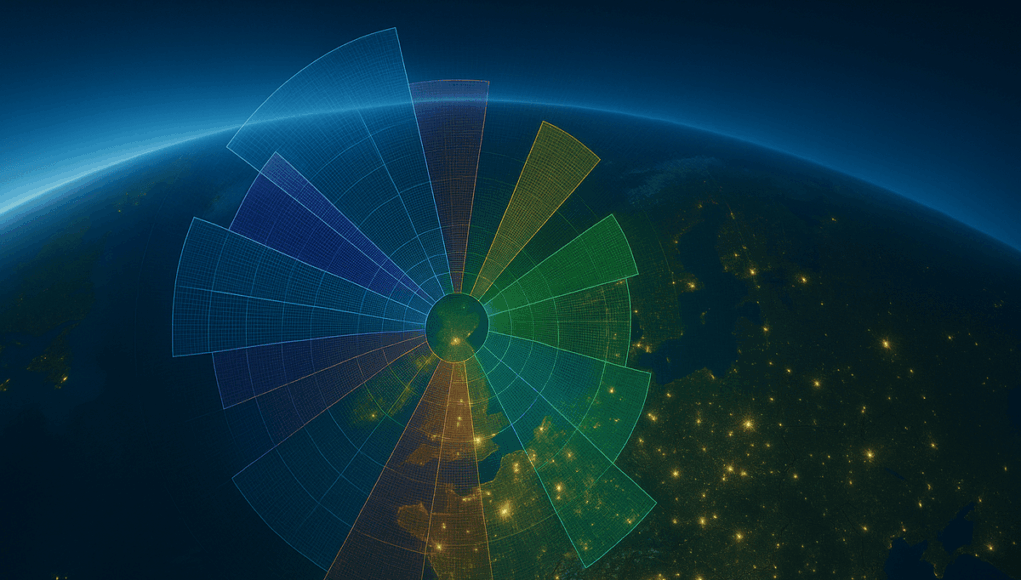
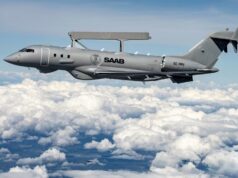


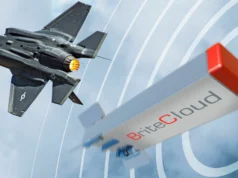
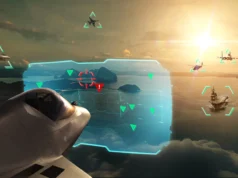
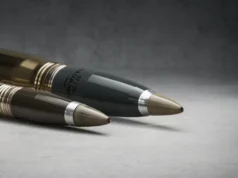
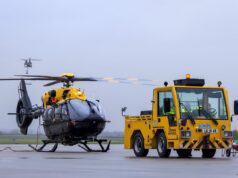

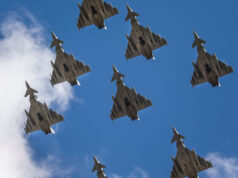
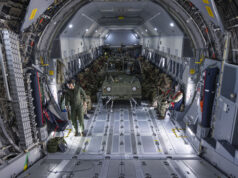

This will be extremely expensive, it would come with a similar acquisition cost to a fleet of E7’s but lacks the versatility of an E7, at a time when America has decided to abandon high capability AWACS in favour of magic solutions.
I can see this as a nice to have that ENATO should chip in for but I can’t see it as being worth while for a UK only purchase.
These radars will always experience some intermittence, that’s ok for Australia guarding against Indonesia but it’s hardly suitable for QRA in the face of Russian bombers so it will still require other radar solutions to back it up.
Australia has been operating and continuously upgrading JORN since the 1970s and has developed tactics to minimise the limitations of the technology and improve its accuracy and reliability given its reliance on atmospheric and ionospheric conditions.
Operators continuously adjust beam angles and operating frequencies to match and compensate for atmospheric conditions. Extreme atmospheric changes tend to degrade its range rather than render it inoperable. Overall it is more reliable than relying on early warning satellites whose trajectories tend to limit coverage to certain times or days.
Also as it operates on HF frequencies and stealth fighters are designed to minimize radar reflections in the X and S bands it is surprisingly good at locating them using some sophisticated algorithms to track them and the ionospheric disturbances (wakes) or plasma trails from jet exhausts.
So while it can’t provide weapons grade tracks, it can provide bearings and altitudes at sufficient ranges (typically thousands of kilometers) to allow other RAAF assets to be vectored to track (E7 or Peregrine for airborne or P8 and Triton for maritime) or intercept (F35s or Super Hornets).
1. Australian radars are looking away from the pole, UK and Canada are looking towards the poles. That means actively looking into the ionosheperic disruption caused by the aurora borealis.
2. There are 2 kinds of stealth. Full spectrum stealth that is designed to present the smallest signature to both low frequency search radars and high frequency fire control radars. The B2 and B21 are examples. The F35 and F22 are designed to produce the smallest signature to fire control radars. Search radars can get intermittent contact. However Iran had latest generation S band Russian search radars that were comfortably overcome by the F35. Some reports even say that the Iranians had Russian S band bi static radars.
The B-2 Spirit does not have full all-aspect stealth against high-frequency (HF) radar -no current stealth aircraft is truly stealthy against HF radar.
The B-2 is optimized for low observability in the microwave radar spectrum (primarily X-band and S-band).
Its design shape, angles, and RAM are finely tuned to defeat these radar bands, especially from frontal and top-down aspects.
HF radar (3–30 MHz) uses very long wavelengths (10–100 meters). These wavelengths interact with the aircraft as a whole, rather than being absorbed or deflected by surface treatments or shape.
Stealth features that work in microwave bands don’t work well at HF because the wavelengths are larger than the aircraft itself. Radar absorbent coatings are generally ineffective at these frequencies as
scattering and reradiation are harder to control.
While the B-2 may have some reduced signature even in HF due to its smooth, tailless design, it cannot avoid detection entirely.
HF radars like JORN or Russia’s Konteiner system are likely to detect its presence at long range, and while not offering weapons grade tracks they can vector a Wedgetail where its L band MESA radar could then refine the track and it combination with an F35 could achieve a weapons lock.
This becomes a cat and mouse game made all the more difficult if the B2 is aggressively maneuvering or terrain masking.
In any case this is a hypothetical since the RAAF is unlikely to be kinetically engaging a B2 any time soon. Of course using the JORN/E7/F35 team (maybe soon with a Ghost Bat or two in the mix) is much more likely and realistically able to defeat the stealth of PLAAF J20.
One aspect that might make sense on this if is it points east. With a 3000km range it would effectively provide radar coverage over all of Europe and Russia and could be used for command and control in a way the Americans are hoping to use satellites to do.
That would effectively give the UK control of any air war in Europe. It would also be a massive target for any weapon Russian could get to it.
.
So I guess Flight Radar 24/7 Isn’t really that good then ?
“we’re in it for the long haul”.
FR24 isn’t really a radar system, it can only “see” what wants to be seen.
Pretty sure they were joking.
“Pretty sure they were joking”.
Yup.
Most on here don’t like that sort of thing, it interferes with the serious peoples seriously important comments because they seriously think other serious people take them seriously.
“You cannot be serious”.
… or a stealth version of it Coll that’s practically undetectable.
An array pointing west might also be (more) useful since JORN can identify maritime targets as well as aircraft. With a range stretching almost across the Atlantic you could keep tabs on any Russian surface vessels.
The clutter from enormous volumes of air traffic across Europe would be very hard for any radar with a strategic range of thousands of kilometers to deconflict no matter what technology it was using.
It makes more sense in the Canadian context surveying its vast northern arctic approaches with relatively little air traffic. It will be a valuable addition (but not replacement) for NORAD radars.
Interesting fact, The Soviet Union are credited with the first operational over the horizon radar (OTH) in 1949. However, in 1937 Chain Home became operational. With initial detection ranges from 40 then 80 miles, that were later increased to near 200 miles to detect V2 launches. The system used a pulsed HF transmission operating between 20MHz and 30MHz (wavelength of 20m to 10m, that was later expanded to 55MHz (5.5m). Being HF the signal bounced off the ionosphere, then off the ground and back up etc. Where it was detected in Germany. Germany eventually sent out a few Zeppelins to investigate where this annoying signal was coming from? Finding the towers at Orfordness, they suspected it was radar, but concluded it must be a signal used for navigation. The German border from Orfordness is just over 400km (250 miles) away. At the time, Watt and his Team believed the backscattered signal was just noise, so produced ways to filter it out. If only they had realized, they would have had a way to see beyond the horizon.
There are significant problems that need to be overcome with HF based radars. For example, when used over land, they will detect moving ground based traffic. Which if being used over Europe, will be nearly unmanageable to process. It can be done, but you will need buildings purely dedicated for signal processing. Really you need to be transmitting at an area that has a low population density and very little surface traffic, i.e. the ocean, deserts, artic etc. The second is the area where you set up the transmitter and receiver arrays. It needs to be really flat and free from obstructions for a quite a distance (at least 20 miles) if you use something similar to the JORN design. Though you could use a similar design to the French Nostradamus, which has the 288 antenna dipoles arranged in a 3 arm star pattern in a 400m diameter pattern. This allows you to have 360 degree view, but does limit the receiver sensitivity and therefore the detectable range compared to the JORN design. Which is flat and where the transmitter array is 275m wide, whilst the receiver array is made up of 500 dipoles and is 3.2km wide. This allows the JORN to detect targets at least 3000km away, though it has been stated it can detect objects well over 5000km away. Whereas the Nostradamus detects objects some 2000km away.
A OTH type radar would be ideal for watching the mid to eastern Atlantic as well as up to the Artic.
Hi Davey.
Can you comment on the existing OTH radar we have ( with the US of course ) in Cyprus, and it’s possible capabilities?
You mention a few things:
2 sites, Transmit and Receive:
PLUTO I & II have this already, Transmit is at Akrotiri Salt Lake site ( big protests about that back in the day ) and Receive is at Ayios Nikolios, south of the main site. The array is huge at both places, both well apart.
That region has low population density, is close to the sea.
What can JORN do that PLUTO cannot?
Hi Dan, I can’t really comment on Pluto, other than what’s been published (There are few radio Ham sites that record Pluto, where you can listen to the signal). Suffice to say its not as big as the JORN array. Where if I remember correctly the receiver array is about 1km smaller. Even so it can still detect objects in Afghanistan. I think the main difference is that Australia have been putting more money into upgrading their OTH radar. So apart from the detectable range, the signal processing side is probably better.
Hi Davey.
I thought as such, but thought I’d ask, as you’re the man re this stuff. 👍
As well as to point out to others here that we have our hands on an OTH already. It is not well known.
Well not surprising the Germans surmised the Orfordness signals were for navigation as of course military radio range finding experiments pre radar were being operated there from the 20s, they even made shipping Companies pay for the service on understanding that the sea there was notoriously rather treacherous for shipping. Gotta love their style.
And of course Cobra Mist was operated there, the remnants of which can still be studied. That place has one long history of technological progress from the first military airfield to the nuclear bomb casing tests that’s difficult to comprehend for such a seemingly tranquil, if unique spit of land. The Shepherd tells a good story too.
Interesting about chain home technically being able to see over the horizon, that’s new to me though I suspect making it actually useful in that period even had they understood the possibility would have been near impossible. But interesting none the less, I assume some would have recognised the potential by the late 40s into the 50s if only theoretically.
It was known since the 1920’s that you could bounce radio waves off the ionosphere. However, as the UK developed the magnetron, which pumped out centimetric wavelengths, that gave significantly better target resolution and much less clutter, HF based radars were seen as old fashioned and a dead end. In the 1950’s with the help from Marconi, they did under project Orange poodle look at over the horizon radars, but using the surface wave, rather than the sky wave. It seems other countries saw the benefits of using HF for OTH radars. The UK in the 1950’s and 60’s became obsessed with Russian nuclear bombers and then the ballistic missile being unstoppable, so ceased further development of these types of radars. I really don’t understand the defeatist mindset of that period!
If the people of that period realized that an OTH radar using the skywave technique could give you a detection range from 400 to 1500 miles, compared to the 200 miles for the then ground based S-band Type 80 radars, perhaps their attitudes would have changed.
The problem with using Chain Home is that the transmitter isn’t really an array. Rather it is a number of string (wire) dipoles strung between two towers. To form an array you need a lot more towers, which would give you the ability to do beamforming and therefore steering. I believe Chain home was limited to a forward field of view of only 60 degrees. Whereas, something like the JORN will have around 120 degrees. Along with being able to adjust the transmission angle in elevation.
Now I wonder what happens if you have a Russian ‘fishing vessel’ bobbing around off shore of Suffolk this time around (or wherever it’s located) should we decide to adopt it. Never solved back then so have things changed in the meantime? Otherwise does the BBC need another, if hugely expensive World Service transmitter.
Have to say mind if the Australians have truly mastered this over the horizon radar technology where the Americans failed so dismally in the past then the more publicity the better to deflate American egos.
Yes. There has been some consternation and disbelief in USAF circles at its ability to track stealth aircraft, hence the U.S. reported interest in acquiring JORN
Hmmm…two-way trade mutually beneficial: T-26 systems and components of SSN(A) to Oz, JORN to Blighty. Based upon PLAN fleet circumnavigation of Oz the Aussies may wish to consider a few more strategically placed sites. How many sites for CA? The UK?
The Ionosphere changes altitude over the day, during daylight hours its at a much lower height. You also can’t see the areas that the signal is being bounced over. Its always been the issue with over horizon radar is that they are very dependent on atmospheric conditions and very costly. The cost/benefit has never really worked.
Some of this can be mitigated by using phased arrays. As the transmitted beam is steerable, which means you can alter the angle the signal is transmitted at towards the ionosphere. There are still issues with a minimum and maximum angles due to ghosting, where backscattering is detected by the receiver out of phase
I assume advancing computer and software techniques are heavily exploited to try to minimise these problems and make results more predictable and reliable. One has to always be aware that promising but historically failed technology may find new opportunities due to sometimes being combined with relatively unrelated advances elsewhere as they occur. Indeed I guess a great many inventions only take off when many such ingredients eventually combine, be it through advances or someone’s lateral vision.
Well done AUS, and well done CAN. If only there was a stronger AUKCAN alliance and drop unreliable/unethical US…
just a historical note to remind how far the UK has atrophied from the 1930s when RADAR was first discovered. Watson-Watt, Bawdsey, Ferranti, Marconi, Racal… (sighs!)
The UK should be at the forefront of Radar: quantum, SAR etc. and UK air, sea, and land should be saturated with robust radar coverage feeding a comprehensive, layered defence system.
Australian firm CEA is also at the forefront of AESA radar technology with its CEAFAR radars on the Anzac class frigates and specified for the Hunter Class.
CEA is also providing radars for the Australian Army GBAD system base on the NASAMS platform. About to enter service using ground launched AMRAAMS and A9X (latest life fire test of A9X from Hawkei chassis this week at Woomera).
The AusGov like the company so much they bought 72% of it
That makes me cry, Ferranti, Racal and Marconi geez those three companies brought the World much of the modern electronic age, and where are they now, painful to witness. Various others you could add to them too.
It’s all done with mirrors 😂
What about a swap. The first UK built AUKUS sub for JORN?
Thats a massive loss to the UK taxpayers
It might be expensive but it is a security assett. The problem with this administration is projects are talked about but never funded.
I could see this as filling in a capability gap for UK / eNATO, namely, persistent long range over the horizon detection capabilities with the potential to detect Ballistic Missiles and Stealth aircraft. Obviously, bouncing the signal off the ionosphere means you are dependent on conditions especially with regards to effective operational range but it sounds as if the RAAF as this sorted. I also note that the RAAF were the driving customer for the E7 system so my guess is that the JORN and E7 would complement each other…
So given the ludicrously small fleet of E7 (just 3 a/c) anything that enables those assets to be deployed where they are most needed, i.e. where active targeting and engagement data is required, would be very valuable indeed. Of course, we should expand our AWACS capability anyway as 3 aircraft do not make a viable operational fleet for many reasons, losses, maintenance, etc… Properly arranged the JORN system would, as has already been pointed out, enable us to monitor surface targets far out into the North Altantic and possibly out to Merdeira or Gibraltar, for example, which would also allow us to deploy our small fleet of escorts to best advantage.
If we are going to spend £2 or £3billion on a new radar system then we really need to improve our GBAD / BM capabilities or any UK-JORN system along with Fylingdales Radar are likely going to get taken out way too easily.
It’s all linked…
Cheers CR
We actually have an OTH radar.
It is in two locations in Cyprus.
Hi mate,
I wasn’t aware of that.
I’ve just found a real geeks website SIGIDWIKI.COM 🙂 According to them the Radar is called PLUTO II and operates in the 8 to 38MHz region, slightly higher frequency than JORN.
Begs the question why we haven’t built versions to cover the High North / Atlantic region in the UK?
However, Google AI suggests that the PLUTO II might be a version of the JORN radar..!? Which would make sense given JORN is a BAE System product, although I don’t entirely trust AI responses I cannot find any reference to PLUTO II regarding who built it. There appears to be very little information about the radar outside of its frequencies and bandwidths, the latter seems to be down to the fact that it is operating on some of the HAM radio frequencies which I am guessing goes down like a lead balloon… but also means that there appears be plenty of open source ESM data on it’s transmissions, including recordings of the signal!
If it is a JORN derived system then buying another one or two to cover the northern arc over say from Greenland to Poland and a southern arc from Gib to Iceland would given us at least some sort of intelligence regarding air and surface movements in the Atlantic and ballistic missile launches over the North Pole. Added to the data from Cyprus and the UK will be making a serious contribution to eNATO capabilties as well as looking after our own interests.
Now all we need is to order a few more escorts for the RN, some GBAD and more air defence fighters, plus a few… you get the picture 🙂
Interesting stuff.
Cheers CR
The reason you cannot find much on it is because it is a part of our comprehensive intelligence facilities in Cyprus.
I know little more than where its sites are, that it exists, and who runs it.
It’s capabilities and our wider Cyprus capabilities are speculated, outlined on a few sites online, open source material mostly.
I asked the SME, Davey, further up thread, but of course he has little that he can add.
Oooh good site, will have a good look at that mate. 👍
JORN is definitely NOT a BAE ‘product’
The project has been driven by Australian researchers and engineers dating back to experimental installations as far back as the 1950s.
It started out as Project Geebung in the development phase led by the Australian government Defence Science Technology Organisation (DSTO).
This evolved into the first operational phase Project Jindalee and ultimately to the full network consisting of multiple sites known as Jindalee Over-the-horizon Radar Network or JORN.
Over the years DSTO (and its successors) have worked with a number of technical and construction contractors including GEC Marconi, Telstra (Australia’s national telecommunications carrier), Lockheed Martin and Tenix.
BAE is the latest contractor to be apppointed by the Australian Government (in 2018) to work on upgrades to the system. The intellectual property and physical installations remain the property of the Australian Government not BAE.
Fun fact: Jindalee and Geebung are both suburbs of Brisbane.
I can certainly see this of being of value to ENATO with maybe one in UK, one in Cyprus and one in Poland giving full coverage of the Euro Atlantic area. Given the gigantic sums ENATO is suppose to be investing this would be a small cost and it would go along way to replacing US capabilities.
Russia would be kind of permanently screwed having a near continuous radar look capability over much of it’s territory.
OT, but this really gets my goat when they do this nonsense, but oh my flipping God, HMG and the MoD just cannot help themselves….
Just read that Strategic Command, which until around 2015 was quite happily known as Joint Forces Command ( as so much of its output is tri service, multi domain ) will now be renamed Cyber and Specialist Operations Command. 🙄
Yet more rebranding, but does exactly what it did yesterday.
Apparently, this reflects Cybers “Key role” in the organisation.
What cobblers. Cyber is just one role, and one Command ( CEMAG ) that already existed within it, no name changes needed. How will they do Cyber better when called CSOC and StratCom? How?
Likewise, it also has Joint medical, intelligence, special forces, and other areas in its brief, and has for years. All under the Special Ops banner now. DD I think has moved out.
Classic reshuffling of the deckchairs, HMG, without a single new ship, plane, artillery piece, helicopter, submarine, or post.
Laughable.
The day I joined the RAE there was a tannoy announcement that the name was changing to Royal Aerospace Establishment. We hadn’t even got to the office! It was a harbinger of things to come… not much of it good..!
Cheers CR
Do you feel you are becoming grumpy and cynical in your old age ? 😀
Rember what Tony said “things can only get better” 😀
Bloody hell, that war criminal back in 1997?
Very much so.
Old age, steady on, I’m 53, but getting there.
Apart from the money spent on pointless rebranding, I have another reason to gripe.
My orbat knowledge isn’t just in my head, ready to dip into….I increasingly need to refer to my files I’ve created over many decades.
And if they’re to be kept accurate, so I can contribute what little I contribute here, then they need to be up to date!!!!
Or my contribution here is out of date and wrong.
Which means more bloody typing for me changing STC to CSOC!!!!
I dunno…..these anoraks!
Just because someone in MoD cannot leave a name alone without trying to make a name for themselves.
What does Starmer keep saying….Change.
What did Brown say in 2010….Real Change!
Charlatans, the lot of them. It is all words, and people are finally waking up to it.
😂
Glad you find it funny!
This will take me at least 2 hours of my life going through it and updating it.
Rumour mill is that Starmer is in line to succeed the Dalai Lama. What’s not to like?
Laughable indeed.
Anyway, after the debacle in Parliament yesterday, there does at least appear to be a solution to Starmer’s military spending problems. Re-classify as Strategically Vital the proposed Lower Thames Crossing, Heathrow’s 5th runway, and Milliband’s monstrous (in all senses) plans for the National Grid, and voila 5% by 2035. Who needs new ships, planes, etc. Silly? of course, but…
We do love a name change, I grew up with endless name changes for what were deemed failing things to make it look like something new, when in reality it stayed pretty much as it was (or deck chairs moved around) while most of the investment went into the re branding.
This actually makes me feel better!
That this isn’t a new phenomenon!
Oh no, far from it apparently.
One of the guys in the office had a quote about re-organisations / renaming creating the illusion of progress – dated back to some chap in the Roman Empire..! Nothing really new at all.
Cheers CR
Nice reminds me of the French NOSTRADAMUS project from back in the 2000s
91 and it’s still alive.
A demonstrator that is in service for more than 30y…
And I don’t know why they want to update it now when it was about to be thrown away…
#Day 18
Don’t know anything about the technicalities, but if it has been operational for 30 years and nobody else is using it, there has to be some major limitations.
6Bn doesn’t seem like a great amount to pay for 30, or 50+ years of work and incredible ability. Canadians getting good value from their mates.